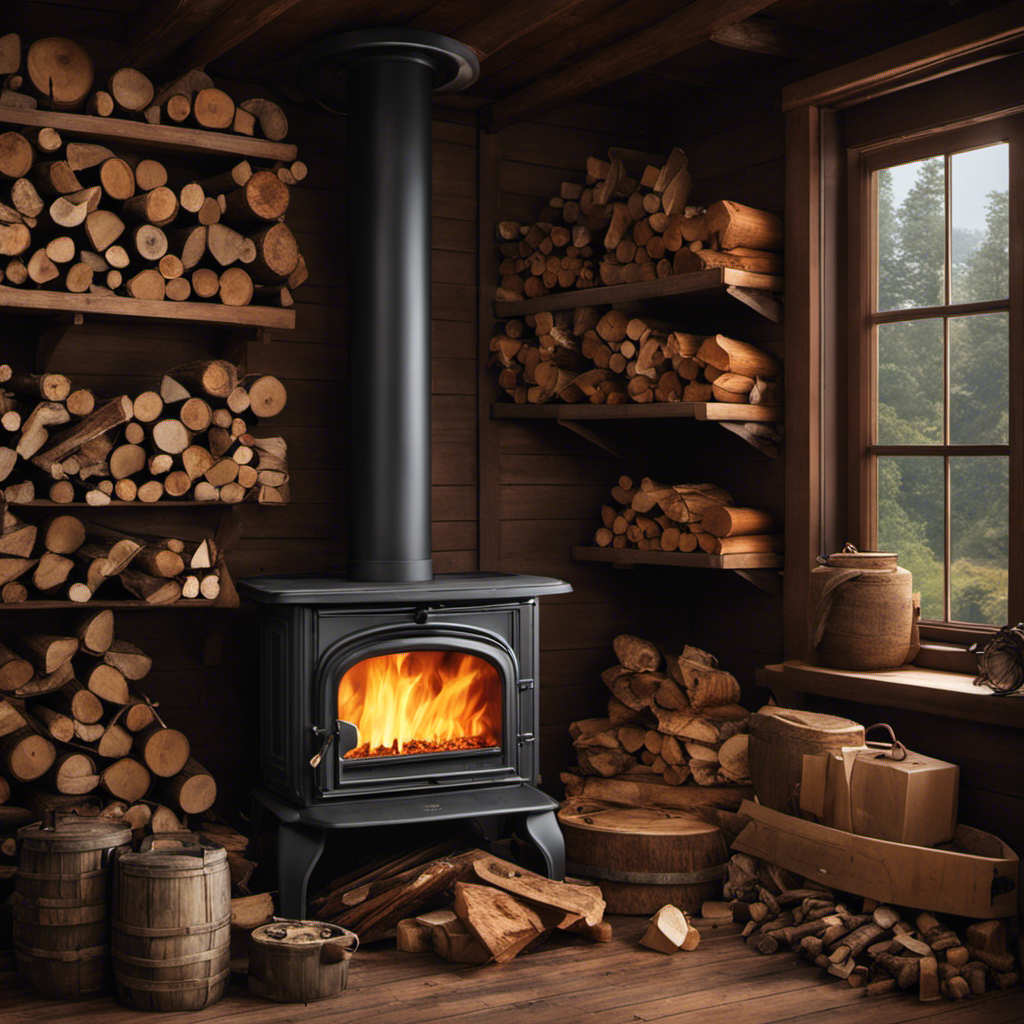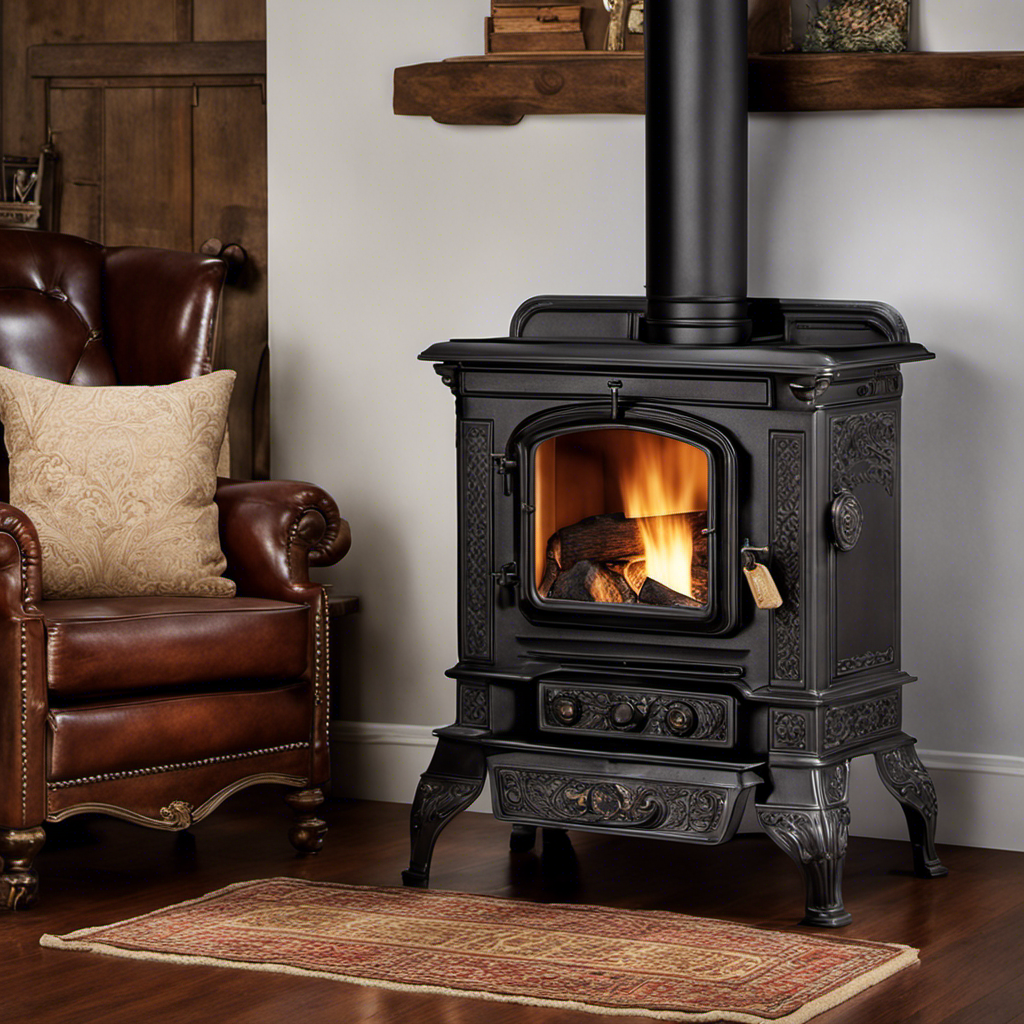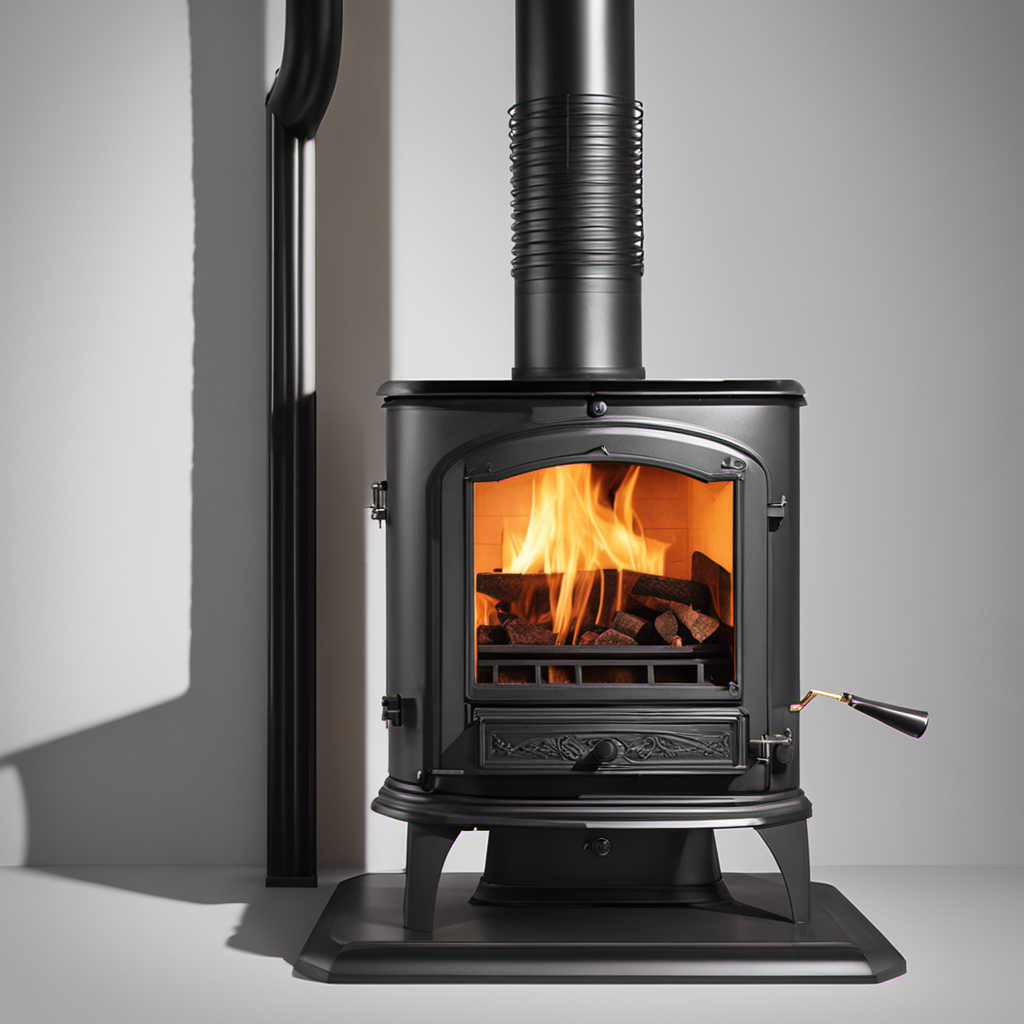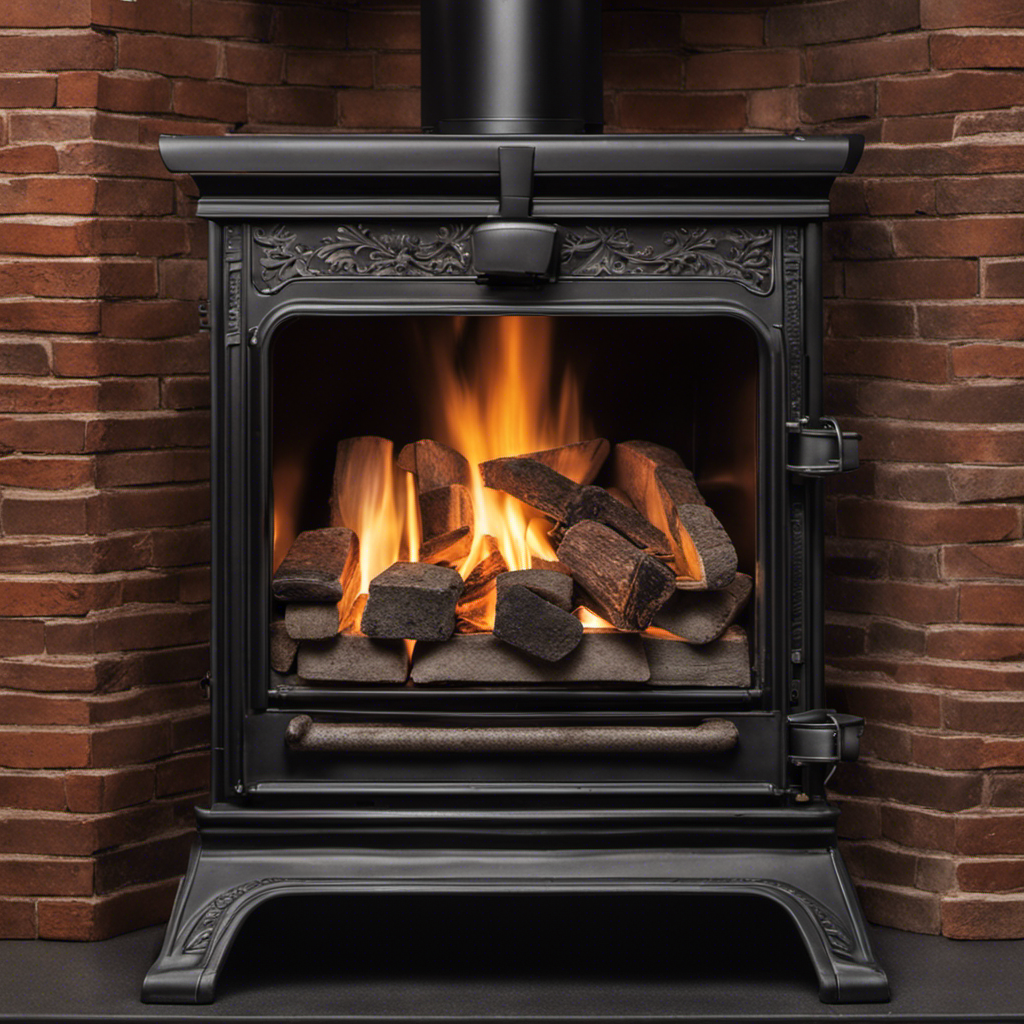As someone who loves wood stoves, I have learned from my difficult experiences that not all materials are suitable for burning. When fueling your warm fire, there are certain substances that should definitely be avoided.
In this article, I’ll be sharing my knowledge on toxic materials to avoid burning, common mistakes to steer clear of, and alternative fuels that are a no-go for wood stoves.
Stay informed and keep your fires safe and warm.
Key Takeaways
- Burning plastics, rubber, treated wood, and household waste in a wood stove releases harmful chemicals and pollutants into the air, contributing to respiratory problems, long-term health issues, and air pollution.
- Proper disposal of toxic materials and household waste through recycling programs, hazardous waste facilities, and donation to local organizations is crucial to protect our health and the environment.
- Burning wet or green wood leads to inefficient combustion and excessive smoke production, while using properly seasoned hardwoods and cutting wood into smaller pieces promotes efficient burning.
- Using gasoline or propane in a wood stove poses safety risks such as explosions and carbon monoxide poisoning, while wood pellets made from compressed sawdust are a safe and renewable alternative fuel with lower environmental impact.
Toxic Materials to Avoid Burning
I always avoid burning toxic materials in my wood stove. It’s important to be aware of the health risks associated with burning such materials. When toxic substances, such as plastics, rubber, or treated wood, are burned, they release harmful chemicals into the air. These chemicals can be inhaled and cause respiratory problems, irritate the eyes and throat, and even lead to more serious health issues in the long term.
Additionally, burning prohibited items in a wood stove can have a detrimental impact on the environment. Toxic materials release pollutants into the air, contributing to air pollution and climate change. It’s crucial to dispose of these items properly, following local regulations, to protect our health and the environment.
Household Waste That Shouldn’t Go in Your Wood Stove
Burning household waste, such as plastics or chemicals, is harmful to the environment and shouldn’t go in your wood stove. When these materials are burned, they release toxic pollutants into the air, contributing to air pollution and climate change.
Not only does this harm our health, but it also has a detrimental effect on the environment. Fortunately, there are alternative recycling options for disposing of these items properly, reducing their environmental impact. Plastics can often be recycled through local recycling programs, while chemicals should be taken to designated hazardous waste facilities.
Common Mistakes When Burning Wood
While burning wet or green wood may seem convenient, it can lead to inefficient combustion and excessive smoke production. Here are some common misconceptions and best practices when it comes to burning wood in a stove:
-
Seasoned wood: Using properly seasoned wood is crucial for efficient burning. Seasoned wood has been dried for at least six months, reducing its moisture content to around 20%.
-
Wood types: Hardwoods like oak and maple are ideal for burning in a wood stove because they’ve a higher energy content and burn longer compared to softwoods like pine.
-
Size matters: Cut your wood into smaller pieces to increase surface area and promote better airflow, resulting in a more efficient burn.
-
Proper maintenance: Regularly clean your stove, chimney, and flue to prevent creosote buildup, which can lead to chimney fires.
Alternative Fuels That Are Not Safe for Wood Stoves
Using alternative fuels like gasoline or propane in a wood stove is not safe due to the risk of explosions and carbon monoxide poisoning. It is important to understand the potential dangers associated with using these fuels in wood stoves. Instead, there are renewable energy sources that can be used in wood stoves, which are both safer and more environmentally friendly. These include wood pellets, which are made from compressed sawdust and other wood waste, and can be easily burned in a wood stove. Wood pellets are a renewable energy source because they are made from a byproduct of the lumber industry. They also have a lower environmental impact compared to alternative fuels, as they release fewer greenhouse gases when burned. Additionally, using wood pellets helps to reduce waste and supports the sustainable use of wood resources.
| Alternative Fuels | Safety Concerns | Environmental Impact |
|---|---|---|
| Gasoline | Risk of | High |
| explosions | ||
| Propane | Risk of carbon | Moderate |
| monoxide | ||
| poisoning | ||
| Wood Pellets | Safe to use | Low |
How to Properly Dispose of Unburnable Items
I can help you figure out the best way to dispose of unburnable items. When it comes to recycling unburnable items or properly disposing of non-combustible materials, there are a few key methods to keep in mind:
-
Recycling Centers: Many recycling centers accept certain unburnable items such as plastic, glass, and metal. Check with your local recycling center to see what materials they accept and how to properly prepare them for recycling.
-
Hazardous Waste Facilities: Certain unburnable items like batteries, electronics, and chemicals require special handling. Hazardous waste facilities are equipped to dispose of these items safely. Contact your local government or waste management department for guidance on how to safely dispose of hazardous materials.
-
Donation Centers: Consider donating unburnable items that are still in good condition to local organizations or charities. Items such as clothing, furniture, and appliances can often find a new home through donation centers.
-
Landfill Disposal: If all else fails, landfill disposal may be necessary for some unburnable items. However, it’s important to follow local regulations and guidelines for proper disposal to minimize environmental impact.
Conclusion
In conclusion, it’s crucial to avoid burning toxic materials, household waste, and alternative fuels in your wood stove. By doing so, you can prevent harmful pollutants from being released into the air and ensure the longevity and efficiency of your stove.
Remember, proper disposal of unburnable items is essential for a safe and clean environment. Let’s keep our homes warm and cozy without compromising our health and the planet’s well-being.
Growing up surrounded by the vast beauty of nature, Sierra was always drawn to the call of the wild. While others sought the comfort of the familiar, she ventured out, embracing the unpredictable and finding stories in the heartbeat of nature.
At the epicenter of every remarkable venture lies a dynamic team—a fusion of diverse talents, visions, and passions. The essence of Best Small Wood Stoves is crafted and refined by such a trio: Sierra, Logan, and Terra. Their collective expertise has transformed the platform into a leading authority on small wood stoves, radiating warmth and knowledge in equal measure.











